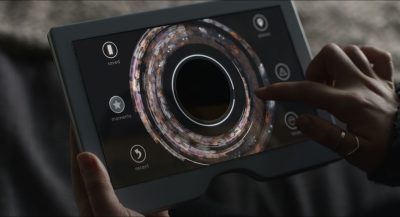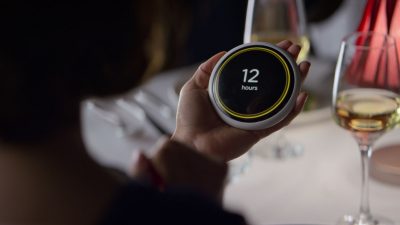
Black Mirror: U.S.S. Callister – Photo courtesy of Netflix.
The fourth season of Black Mirror is now streaming on Netflix and it’s as brilliant as it’s ever been.
The season’s weakest episode, Black Museum, would be considered the best episode of any other anthology series, while the remaining five episodes are quite possibly the best episodes of the series to date (the season as a whole is even stronger than season three – which spawned the Emmy®-winning San Junipero episode).
As is usual with the series, season four (all episodes written or co-written by series creator Charlies Brooker) deals with the pluses and minuses of the continued progression of technology – but for a first (and something I only realized after watching all six episodes), every episode features a female protagonist.

Balck Mirror: Arkangel – Photo courtesy of Netflix.
In Arkangel, the protagonist is a single mother (Rosemarie DeWitt) who, after a scare, volunteers her daughter to test a revolutionary new tacking system; in U.S.S. Callister, Nanette – a young woman who has just gotten a job with a computer tech firm – awakens on a Star Trek-like starship captained by the heroic Captain Daley (Jesse Plemons); Crocodile features a deice that allows its user to view and record memories; Hang the DJ is a commentary on dating apps and the tendency of young people to invest too much in their devices instead of people; Metalhead finds a woman (Maxine Peake) in a post-apocalyptic duel with robot guard dogs, and the aforementioned Black Museum features a young woman (Letitia Wright) whiling away a few hours in a museum of artifacts from various high profile crimes while her car recharges.
The six episodes focus on both seriously advanced technology and the fears, hopes, dreams and desires of their protagonists. Of the six, two could, conceivably, be considered to have something resembling happy endings (though, as last season’s San Junipero showed, happy endings are a matter of audience interpretation).

Black Mirror: Hang the DJ – Photo courtesy of Netflix.
Beyond basic episode descriptions, it’s pretty much impossible to say anything else without spoiling them – but they are all among the best written of episodes currently available in any form of television.
Brooker is the Rod Serling of this generation: his stories require an audience that is willing to go to strange places. Each of season four’s episodes has an unusual twist – whether that’s the last scene revelation of Metalhead, or consequences of testing new technology on children.
Every new technology is used to illuminate character – and the consequences of using each new technology is logically and emotionally developed.
Each episode utilizes a unique look (black and white for Metalhead; the heightened palette for most of U.S.S. Callister) that directly impacts how the episode draws the audience in.
Season four of Black Mirror may premiere with only a couple days left in 2017, but it’s one of the best shows of the year.
Final Grade: A+